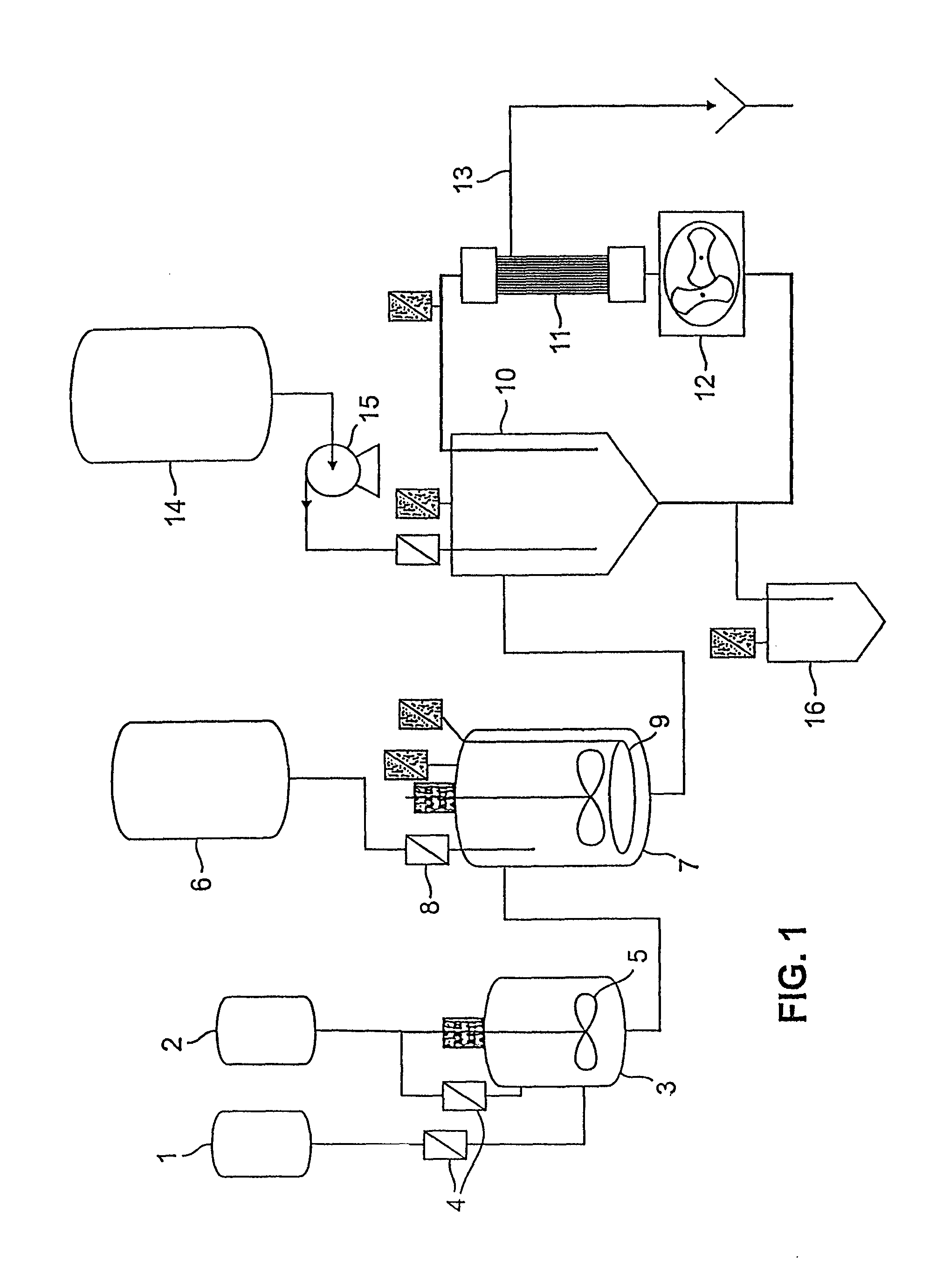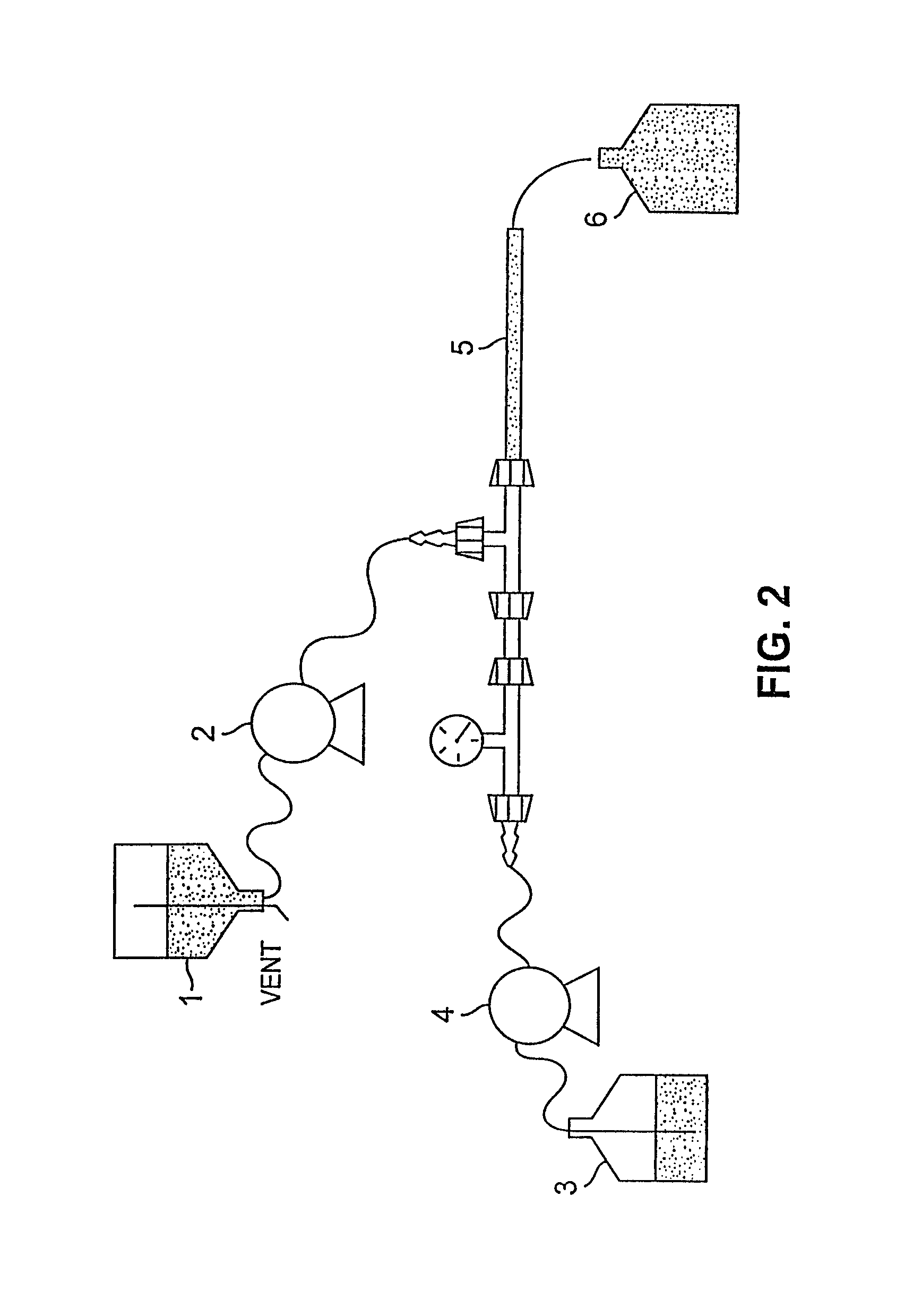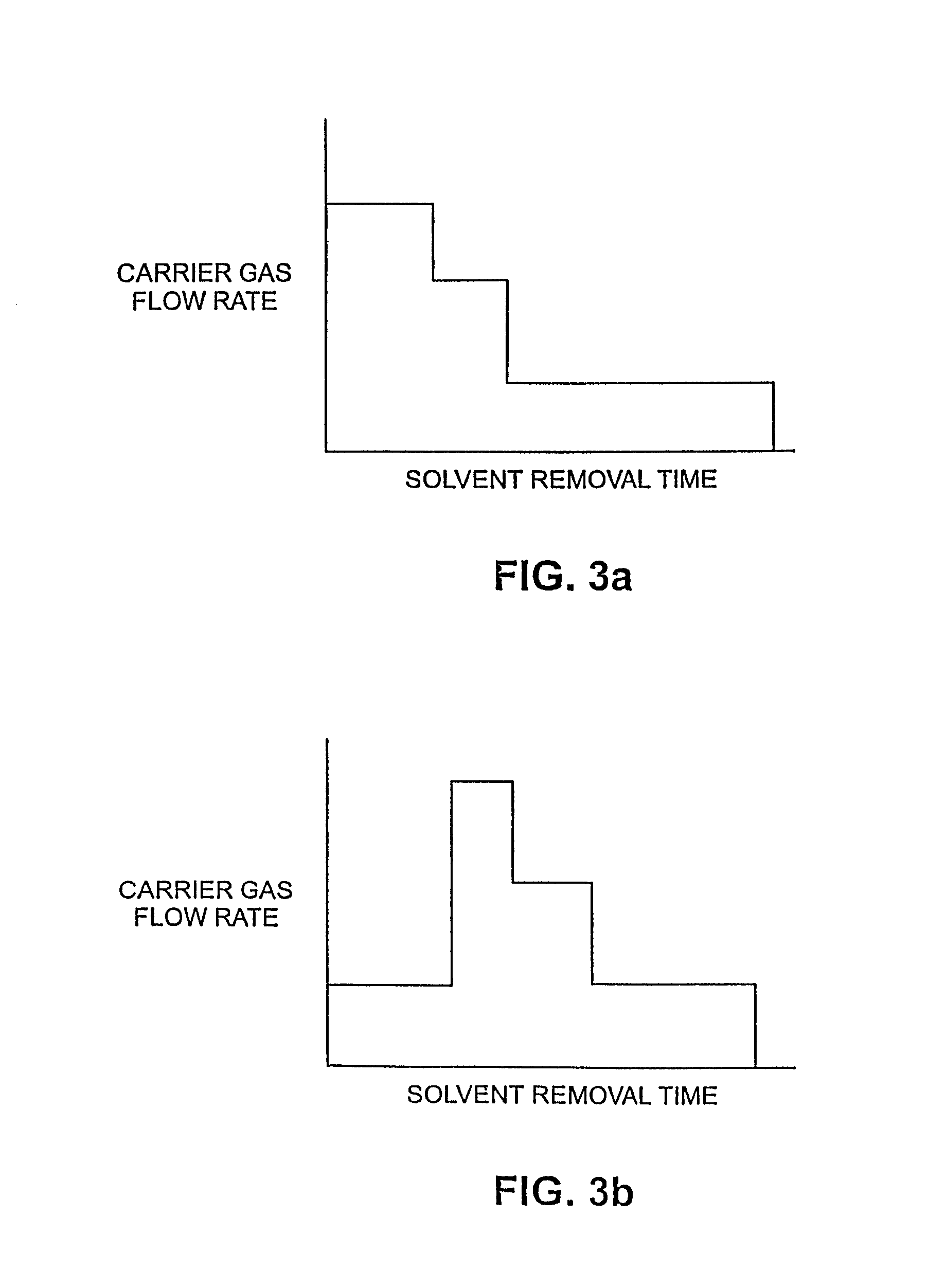Production of multivesicular liposomes
a technology of multivesicular liposomes and liposomes, which is applied in the direction of colloidal chemistry, drug compositions, peptide/protein ingredients, etc., can solve the problems of reducing the size of droplets in the emulsion, not being able to scale up to batch sizes, and lipids used in the manufacture. to achieve accurate and rapid scaling up reactions
- Summary
- Abstract
- Description
- Claims
- Application Information
AI Technical Summary
Benefits of technology
Problems solved by technology
Method used
Image
Examples
example 1
Viscosity as a Scale-Up Tool in First Emulsifications
[0137]The first emulsion process involved mixing two sterile filtered immiscible solutions at a specific impeller blade speed using a shear plate for a designated time. The first solution was a collection of polar and nonpolar lipids dissolved in a volatile water-immiscible solvent. The second contained an active drug in aqueous solution. Raw material quantities were scaled directly. To ensure that the first emulsion was consistent between scales, a dependent variable that was scale independent was chosen: viscosity. A relationship between viscosity and mixing time of the first emulsion has been established, as described in FIGS. 8a and 8b.
[0138]After the viscosity of the first emulsion was measured at the 1 L scale (12.8 cP), the agitator rpm at this scale was determined. The same blade speed of the shear plate at both the 1 L and 25 L scales where held constant. The blade speed is equal to the product of impeller diameter, π, a...
example 2
Particle Size as a Scale-Up Tool in Second Emulsifications
[0148]A water-oil-water emulsion was formed by blending the first emulsion with a much larger volume of a second aqueous solution. Final particle diameter and size distribution were a function of impeller configuration, rpm and mixing time. Particle size and distribution were measured using a particle size analyzer (Horiba, model 910). Shear plate diameter and rpm were scaled from the 1 L system following the procedure used in the first emulsion system.
[0149]The second aqueous solution consisted of: 21.88 kg dextrose, 503 g lysine, and 382 kg of water for injection. Initial scale-up calculations for the second emulsion of the morphine-containing preparation of Example 1 at the 25 L scale indicated a 9.0 inch shear plate at 500 rpm should be used. However, under these mixing conditions, the solution was not adequately mixed. The low rpm did not sufficiently blend the denser first emulsion with the second aqueous solution. Furt...
example 3
Solvent Removal
[0153]The w / o / w emulsion generated in the second emulsification step of Example 2 still contained solvent at this point. Solvent was stripped from the emulsion through gas sparging. Controlling the rate of solvent removal was critical. During stripping, regular samples were taken to measure solvent concentration and to monitor drug encapsulation. If the concentration of free drug began to increase during stripping, particle damage was occurring. Initial gas flow rates were increased 25-fold to match the volume increase. Processing time for the solvent stripping was initially held constant between scales. Once the solvent was removed, the particles became rigid and more stable.
[0154]The initial sparging profile of the 25 L morphine-containing solvent spherule system, based on the 1 L process, used three different flow rates. The first stage set the flow at 375 liters per minute (lpm) for 17 minutes. Then the solution was sparged at 1000 lpm for 5 minutes, followed by 2...
PUM
| Property | Measurement | Unit |
|---|---|---|
| pore size | aaaaa | aaaaa |
| volume | aaaaa | aaaaa |
| number weighted mean particle size | aaaaa | aaaaa |
Abstract
Description
Claims
Application Information
 Login to View More
Login to View More - R&D
- Intellectual Property
- Life Sciences
- Materials
- Tech Scout
- Unparalleled Data Quality
- Higher Quality Content
- 60% Fewer Hallucinations
Browse by: Latest US Patents, China's latest patents, Technical Efficacy Thesaurus, Application Domain, Technology Topic, Popular Technical Reports.
© 2025 PatSnap. All rights reserved.Legal|Privacy policy|Modern Slavery Act Transparency Statement|Sitemap|About US| Contact US: help@patsnap.com



